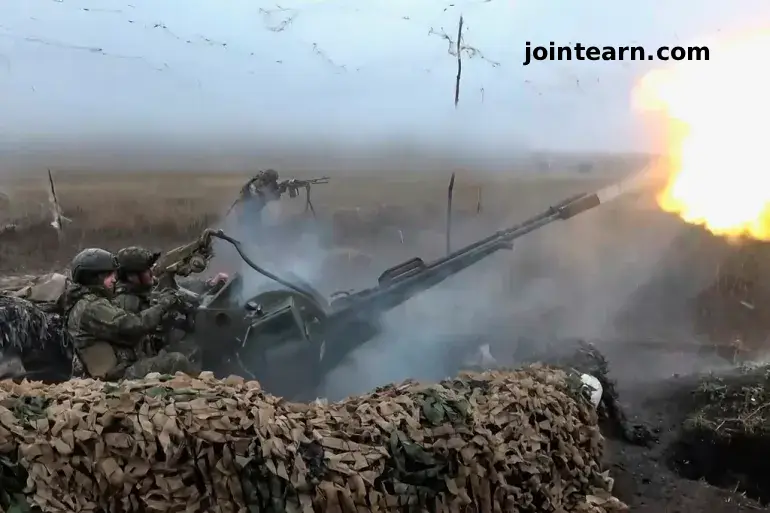
Ukraine has launched a series of drone and missile strikes on Russian energy infrastructure, causing significant power and heating outages in multiple Russian cities. The attacks, a response to Russia’s repeated attempts to disable Ukrainian energy facilities, hit Belgorod near the Ukrainian border and Voronezh, nearly 300 km (186 miles) away.
Russian officials confirmed that the strikes caused “serious damage” to power and heating systems, affecting tens of thousands of households. Local governors reported that drone attacks sparked fires and emergency shutdowns at utility facilities, while electronic jamming measures disrupted several drones over the Voronezh region, home to over one million residents.
Extent of the Damage
In Belgorod, Governor Vyacheslav Gladkov said the strikes disrupted energy and heating supplies for around 20,000 households. Meanwhile, Alexander Gusev, governor of Voronezh, reported that several drones were jammed and a local utility substation caught fire, though it was quickly extinguished.
Authorities in the Rostov region also reported hours-long blackouts in Taganrog, a city of roughly 240,000 people, caused by an emergency shutdown of a power line and a transformer fire.
Despite these incidents, the Russian Defence Ministry reported that 44 Ukrainian drones were destroyed or intercepted overnight, omitting any mention of Belgorod or Voronezh.
Russian Counterattacks
In retaliation, Russia launched overnight attacks targeting Ukrainian energy infrastructure, including substations that supply two nuclear power plants. Ukrainian officials reported seven fatalities as a result.
Russia confirmed conducting “a massive strike with high-precision long-range air, ground and sea-based weapons” on energy facilities and weapons production plants in Ukraine, claiming it was in response to Kyiv’s prior drone attacks on Russian targets.
State-owned Ukrainian energy company Tsentrenergo said these were the largest attacks on its facilities since the war began in February 2022. The company temporarily halted operations at plants in the Kyiv and Kharkiv regions, leaving approximately 100,000 people without power.
Weaponisation of Energy
The strikes are part of an ongoing pattern of tit-for-tat attacks on energy infrastructure, with both Kyiv and Moscow targeting each other’s power grids. Ukrainian drone strikes on Russian refineries aim to reduce Moscow’s oil export revenue, which funds its military operations. Conversely, Russian attacks on Ukrainian energy facilities are intended to deprive civilians of heat, electricity, and running water during the harsh winter months.
Diplomatic Efforts and Talks
Russian Foreign Minister Sergey Lavrov stated that he is ready to meet U.S. Secretary of State Marco Rubio to discuss the conflict and mend bilateral ties. Lavrov reiterated that peace cannot be achieved without “taking Russian interests into account”, signaling Moscow’s insistence on its territorial claims.
Russian President Vladimir Putin demands that Kyiv withdraw troops from the four regions claimed by Russia: Donetsk and Luhansk in the east, and Kherson and Zaporizhia in the south. Ukrainian President Volodymyr Zelenskyy has rejected official recognition of these territories while leaving room to acknowledge them as temporarily occupied.
The proposed talks follow the abrupt cancellation of a planned summit between Putin and former U.S. President Donald Trump, highlighting the fragile state of international diplomatic efforts.


Leave a Reply